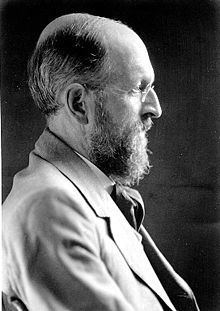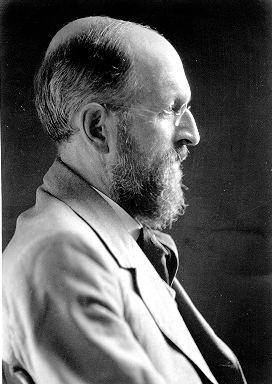Citizenship United States Nephews Christopher Cockerell Role Zoologist | Name Theodore Alison Nationality English Fields Zoology, Botany | |
 | ||
Born August 22, 1866
Norwood, Greater London ( 1866-08-22 ) Resting place Columbia Cemetery, Boulder, Colorado Institutions New Mexico Agricultural Experiment Station, New Mexico Normal University, University of Colorado, University of Colorado Museum of Natural History Alma mater Middlesex Hospital Medical School Notable students Charlotte Cortlandt Ellis Died 1948, San Diego, California, United States Parents Sydney John Cockerell, Alice Elizabeth Bennett Siblings Sydney Cockerell, Douglas Cockerell Books Bees in the Collection of the Uni, Bees of the Family Hylaeida, Zoology; A Textbook for Colleg, African Hylaeine Bees: Am, Bees Collected by the Re | ||
Theodore Dru Alison Cockerell (1866–1948) was an American zoologist, born at Norwood, England, and brother of Sydney Cockerell. He was educated at the Middlesex Hospital Medical School, and then studied botany in the field in Colorado in 1887–90. Subsequently, he became a taxonomist and published numerous papers on the Hymenoptera, Hemiptera, and Mollusca, as well as publications on paleontology and evolution.
Contents

Personal life
Cockerell was born in Norwood, Greater London and died in San Diego, California.
He married Annie Penn in 1891 (she died in 1893) and Wilmatte A. Porter in 1900. In 1901, he named the ultramarine blue chromodorid Mexichromis porterae in her honor. Before and after their marriage in 1900, they frequently went on collecting expeditions together and assembled a large private library of natural history films, which they showed to schoolchildren and public audiences to promote the cause of environmental conservation.
After his death he was buried in Columbia Cemetery, Boulder, Colorado.
Professional life
Between 1891 and 1901 Cockerell was curator of the public museum of Kingston, Jamaica, professor of entomology of the New Mexico Agricultural Experiment Station. In 1900–03 he was instructor in biology at the New Mexico Normal University. While there he taught and mentored the botanist Charlotte Cortlandt Ellis. In 1903–04 Cockerell was the curator of the Colorado College Museum; and in 1904 he became lecturer on entomology and in 1906 professor of systematic zoology, at the University of Colorado, where he worked with Junius Henderson in establishing the University of Colorado Museum of Natural History. During World War II he operated the Desert Museum in Palm Springs, California.
Publications
Cockerell was author of more than 2,200 articles in scientific publications, especially on the Hymenoptera, Hemiptera, and Mollusca, and on paleontology and various phases of evolution, plus some 1700 additional authored works, including treatises on social reform and education. He was one of the most prolific taxonomists in history, publishing descriptions of over 9,000 species and genera of insects alone, some 6,400 of which were bees, and some 1,000 mollusks, arachnids, fungi, mammals, fish and plants. This includes descriptions of numerous fossil taxa, such as the landmark study, Some Fossil Insects from Florissant, Colorado (1913). The standard author abbreviation Cockerell is used to indicate this person as the author when citing a botanical name.
Honors
A dorm in the Engineering Quad at the University of Colorado at Boulder and the moth Givira theodori are named in his honor.
Taxa
Taxa named by Cockerell include:
